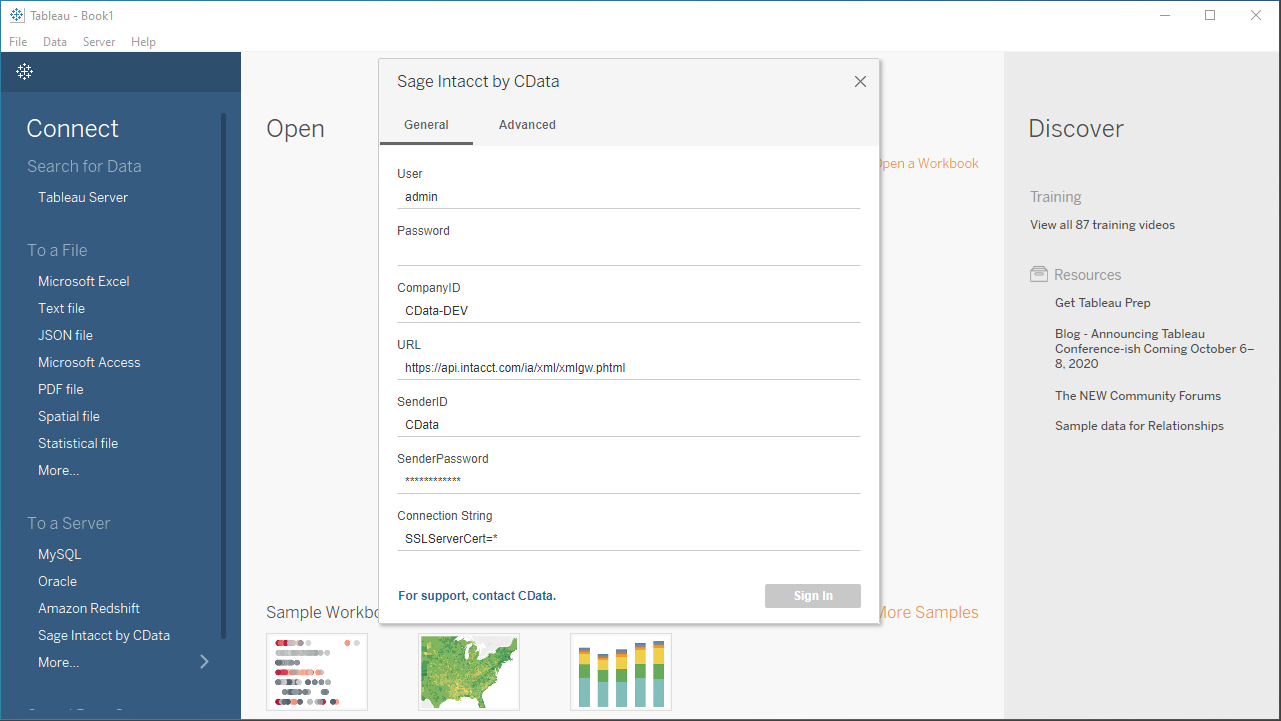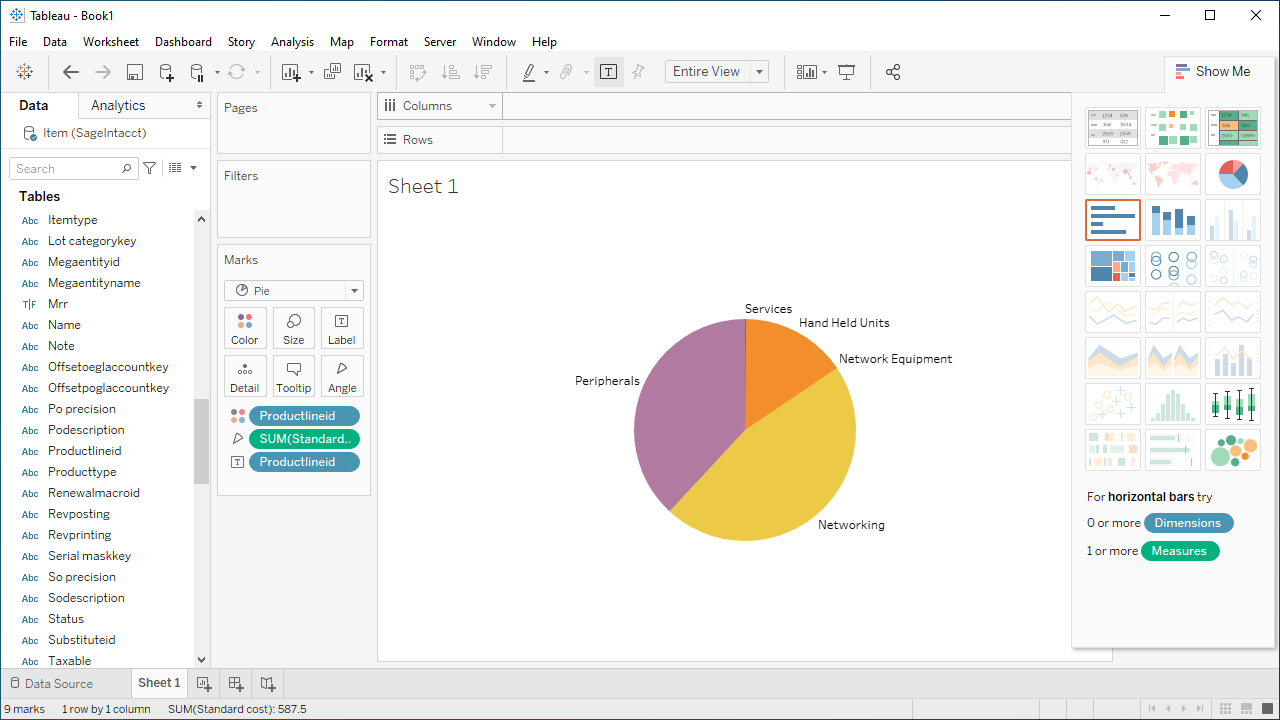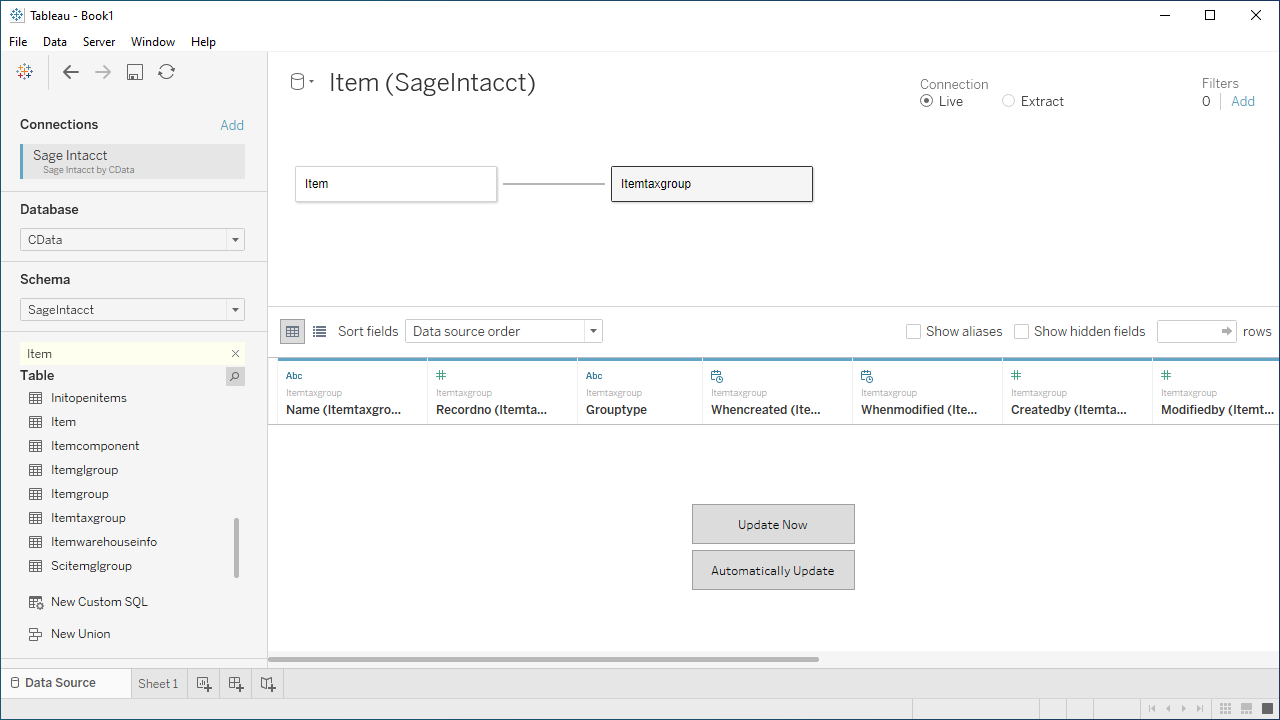Discover how a bimodal integration strategy can address the major data management challenges facing your organization today.
Get the Report →Visualize Live SAP Ariba Source Data in Tableau
Use CData Tableau Connectors and Tableau Desktop to visualize live SAP Ariba Source data.
Tableau is a visual analytics platform transforming the way businesses use data to solve problems. When paired with the CData Tableau Connector for SAP Ariba Source, you can easily get access to live SAP Ariba Source data within Tableau. This article shows how to connect to SAP Ariba Source in Tableau and build a simple chart.
The CData Tableau Connectors enable high-speed access to live SAP Ariba Source data in Tableau. Once you install the connector, you simply authenticate with SAP Ariba Source and you can immediately start building responsive, dynamic visualizations and dashboards. By surfacing SAP Ariba Source data using native Tableau data types and handling complex filters, aggregations, & other operations automatically, CData Tableau Connectors grant seamless access to SAP Ariba Source data.
NOTE: The CData Tableau Connectors require Tableau 2020.3 or higher. If you are using an older version of Tableau, you will need to use the CData Tableau Connector for SAP Ariba Source. If you wish to connect to SAP Ariba Source data in Tableau Cloud, you will need to use CData Connect.
Connect to SAP Ariba Source in Tableau
Open Tableau and click More under Connect -> To a Server. Select "SAP Ariba Source by CData," then configure the connection and click "Sign In."
In order to connect with SAP Ariba Source, set the following:
- API: Specify which API you would like the provider to retrieve SAP Ariba data from. Select the Supplier, Sourcing Project Management, or Contract API based on your business role (possible values are SupplierDataAPIWithPaginationV4, SourcingProjectManagementAPIV2, or ContractAPIV1).
- DataCenter: The data center where your account's data is hosted.
- Realm: The name of the site you want to access.
- Environment: Indicate whether you are connecting to a test or production environment (possible values are TEST or PRODUCTION).
If you are connecting to the Supplier Data API or the Contract API, additionally set the following:
- User: Id of the user on whose behalf API calls are invoked.
- PasswordAdapter: The password associated with the authenticating User.
If you're connecting to the Supplier API, set ProjectId to the Id of the sourcing project you want to retrieve data from.
Authenticating with OAuth
After setting connection properties, you need to configure OAuth connectivity to authenticate.
- Set AuthScheme to OAuthClient.
- Register an application with the service to obtain the APIKey, OAuthClientId and OAuthClientSecret.
For more information on creating an OAuth application, refer to the Help documentation.
Automatic OAuth
After setting the following, you are ready to connect:
-
APIKey: The Application key in your app settings.
OAuthClientId: The OAuth Client Id in your app settings.
OAuthClientSecret: The OAuth Secret in your app settings.
When you connect, the provider automatically completes the OAuth process:
- The provider obtains an access token from SAP Ariba and uses it to request data.
- The provider refreshes the access token automatically when it expires.
- The OAuth values are saved in memory relative to the location specified in OAuthSettingsLocation.

Discover Schemas and Query Data
- Select CData from the Database pull-down menu.
- Select SAPAribaSource from the Schema pull-down menu.
- Drag the tables and views you wish to visualize onto the join area. You can include multiple tables.
![Selecting table(s)]()
- Select Update Now or Automatically Update. Update Now lets you preview the first 10,000 rows of the data source (or enter the number of rows you want to see in the Rows text box). Automatically Update automatically reflects the changes in the preview area.
- Click the tab for your worksheet. Columns are listed as Dimensions and Measures, depending on the data type. The CData Tableau Connector discovers data types automatically, allowing you to leverage the powerful data processing and visualization features of Tableau.
- Drag a field from the Dimensions or Measures area to Rows or Columns. Tableau creates column or row headers.
- Select one of the chart types from the Show Me tab. Tableau displays the chart type that you selected.

Using the CData Tableau Connector for SAP Ariba Source with Tableau, you can easily create robust visualizations and reports on SAP Ariba Source data. Download a free, 30-day trial and get started today.







